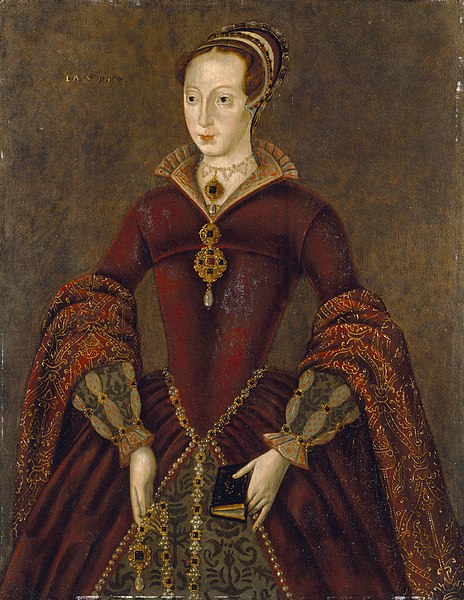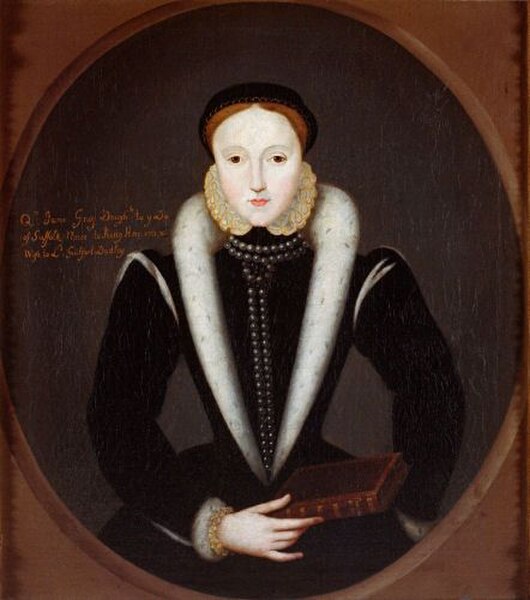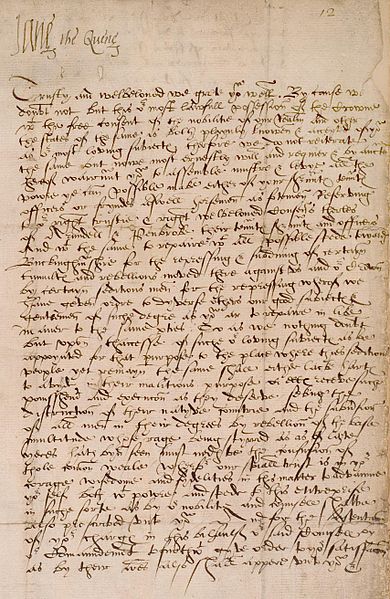Lord Guildford Dudley was an English nobleman who was married to Lady Jane Grey. She occupied the English throne from 10 July until 19 July 1553, having been declared the heir of King Edward VI. Guildford Dudley had a humanist education and married Jane in a magnificent celebration about six weeks before the King's death. After Guildford's father, the Duke of Northumberland, had engineered Jane's accession, Jane and Guildford spent her brief rule residing in the Tower of London. They were still in the Tower when their regime collapsed and remained there in different quarters as prisoners. They were condemned to death for high treason in November 1553. Queen Mary I was inclined to spare their lives, but Thomas Wyatt's rebellion against Mary's plans to marry Philip of Spain led to the young couple's execution, a measure that was widely seen as unduly harsh.
19th-century depiction of Guildford Dudley in the Houses of Parliament, Westminster
The Crown Offered to Lady Jane Grey, as imagined in the 1820s: Guildford and Jane are in the centre
Lady Jane Grey, also known as Lady Jane Dudley after her marriage and as the "Nine Days' Queen", was an English noblewoman who claimed the throne of England and Ireland from 10 to 19 July 1553.
The Streatham portrait, discovered at the beginning of the 21st century, is believed to be based on a contemporary woodcut.
16th century portrait of a lady in the collection of Audley End House, labelled as Jane Grey, copy of the original at Syon House. Based on a portrait type identified as Lady Katherine Grey or Elizabeth I, it is believed that the Syon Portrait was created by William Seymour, 2nd Duke of Somerset, with the help of his grandfather, Lady Katherine Grey's widower, who had also known Lady Jane Grey, tweaking the portrait type into a genuine resemblance of her.
The Execution of Lady Jane Grey, by the French painter Paul Delaroche, 1833. National Gallery
Official letter of Lady Jane Grey signing herself as "Jane the Quene". Inner Temple Library, London






